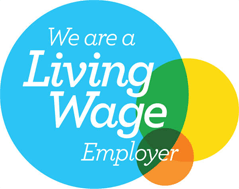Factsheet: Diversity & Equality & the Recruitment Process
- The job description
- Person specification
- The recruitment advertisement
- Images in recruitment advertising
- Application forms
- Equal opportunities monitoring
- Shortlisting
- Planning the interview
- The interview
- The selection process
- Best practice next step
Effective recruitment is the key to having the people with the right skills, expertise and qualifications in the right jobs. Diversity and equality of opportunity should be central to the process. As well as getting the right person for the job, a fair and consistent process will help lower:
- Staff turnover
- Absenteeism
- Disciplinary issues
- Tribunal claims
Below, we highlight the necessary steps to ensure you get the recruitment process right.
The job description
Highlighting the requirements of the role, the job description should be created for every new role and updated when existing positions become vacant. You should avoid jargon and abbreviations and include in the job description:
- Key duties
- Main responsibilities
- A description of the job
Person specification
The person specification describes your ideal candidate’s abilities, skills and knowledge, helping you select the best person for the job, not the person you like the most. It provides the foundations for the recruitment advertisement, shortlisting criteria and interview questions. When writing consider:
- What is essential, not merely desirable
- What skills should already be acquired and which can be learnt
- What skills can be measured or tested at interview
- Whether relevant life experience can demonstrate qualities such as initiative and confidence
- What the specific, not general, skill requirements are – for example, an ‘ability to accurately sort files and find invoices’, not ‘clerical ability’
- What criteria should be eliminated as not relevant to the position – for instance, do not ask for exam-based qualifications unless absolutely necessary and do not exclude non-UK or non-mainstream qualifications
The recruitment advertisement
The Equality Act ensures applicants are treated fairly and equally in the areas of:
- Race
- Sex
- Gender reassignment
- Pregnancy and maternity
- Equal pay
- Disability
- Age
- Religion or belief
- Sexual orientation
You should make it clear in the advertisement that an applicant will not be excluded on the grounds of sex, gender reassignment, pregnancy, maternity, race, marital status, disability, age, religion, belief or sexual orientation. Use neutral language such as ‘sales assistant’ not ‘sales girl’ and avoid sex-specific titles such as ‘craftsman’ and ‘waitress’.
Images in recruitment advertising
It is good practice for illustrated adverts to represent both sexes and to include a multi-cultural mix. For example, it could be discriminatory to advertise a job that illustrates a woman in a profession traditionally undertaken by women. To counteract the effect, either depict a man in equal prominence or add an obvious disclaimer that the job is open to men and women. If a discriminatory advert is published, the advertiser (you as the employer), your agents (recruitment agencies) and the publisher are liable.
Application forms
Application forms mean applicants answer questions in the same format in order to ensure equal opportunities. However, they should be treated with caution. If an applicant feels they have been discriminated against on the basis of information they have provided (for example their marital status), they could take you to a Tribunal. Only seek personal data relevant to the role. You can ask about:
- Disability – but only to identify reasonable adjustments that may need to be made to the interviewing process to ensure all applicants can complete the process on an equal basis
- Criminal convictions – but only if justified for the role. Make it clear that spent convictions do not have to be declared (unless there’s an exception under the Rehabilitation of Offenders Act 1974)
Remember to include:
- Information on rights of access under the Data Protection Act 1998
- An explanation as to whom the information is being provided and how it will be used
- Details of when referees will be contacted
- A warning that incomplete and/or misleading statements can lead to dismissal
Equal opportunities monitoring
It is good practice for you to adopt a monitoring procedure to record the personal characteristics such as the race and sex of applicants and appointees. Attach the monitoring form to the application form or job information pack. On the form, advise applicants that all information will be treated in confidence and will not be seen by any of your staff directly involved with the appointment.
Shortlisting
You should ensure that at least two people from the interview panel should prepare the interview shortlist:
- Using the person specification systematically to assess each application
- Taking into account the person’s ability to do the job – and nothing else
- Completing the shortlisting in one sitting
- Looking at every application independently
- Eliminating anything that could cloud judgment
- Recording why an applicant did or did not make the shortlist (keep records for 12 months)
Planning the interview
Interview panels should have at least two members, preferably who have been involved in shortlisting. The date and time should be arranged at the beginning of the recruitment process, but be flexible. Before the interview:
- Allow adequate time to assess each candidate against the criteria
- Tell candidates in advance if they will be required to take any tests
The interview
Avoid questions, conduct and procedures from which discrimination can be inferred. For example, do not ask: ‘Will your family commitments prevent you from working overtime?’ or ‘What child care arrangements have you got?’. Only ask questions that are relevant and necessary to the job and avoid making snap judgements on the basis of intuition or subjective personality assessments. So, for a final checklist:
- Treat all candidates the same
- Focus on each person’s skills based on the skill specification
- Avoid reading into body language
- Make candidates aware they have the right to request access to their interview notes
- Ensure disabled candidates are not disadvantaged by the interview or application process
- Have the same list of questions to ensure uniformity
The selection process
When all interviews have taken place, you should go through the interview notes and ensure that all candidates meet the essential criteria. Then:
- Decide which of the desirable criteria is more important
- Grade all candidates accordingly
- Appoint the best person for the job (not the person with whom the interviewing panel have the most in common)
- It is only at the point that a person has been offered the job that you should ask whether there are any disability issues. This is to ensure there is enough information to identify reasonable adjustments
Best practice next step
Jobcentre Plus runs a Two Tick Scheme for best practice in employing disabled people.
For expert Employment Law advice on diversity and equality in the recruitment process, contact us today on 01273 609911, or email info@ms-solicitors.co.uk.


